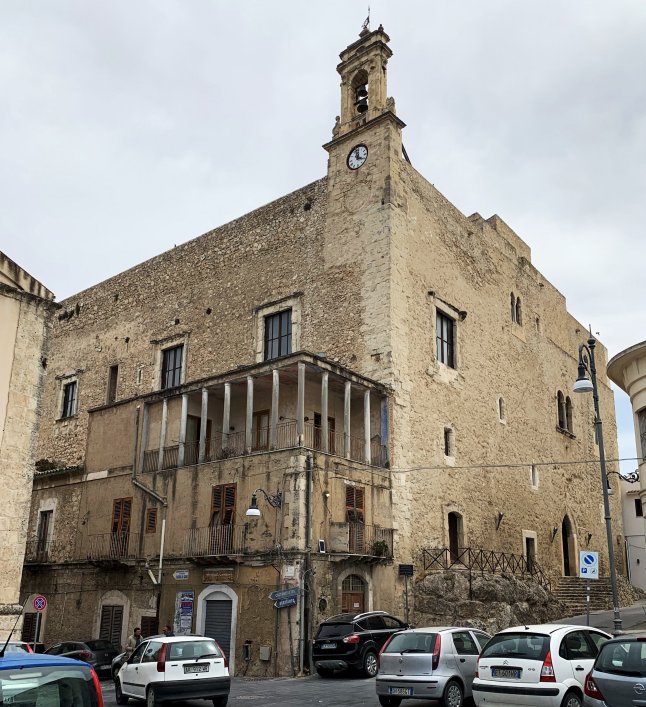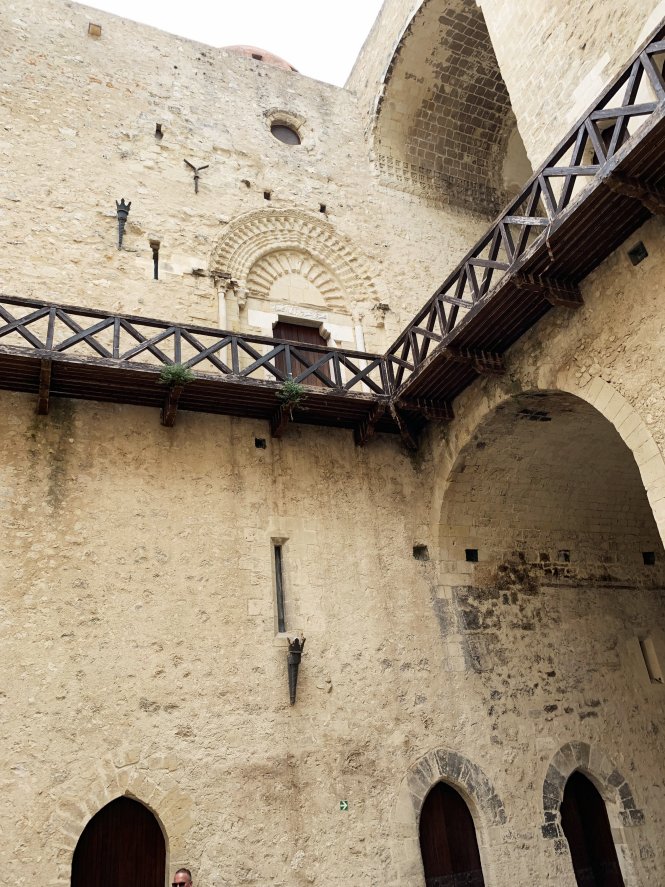Favara

Favara castle is otherwise known as Castello dei
ChiaramonteChiaramonte after their late medieval owners. It is thought that Favara was an Arab settlement
originally called Fawa-warah
which means ‘water source'. The castle existed in the twelfth century when it was held by King Tancred (d.1194), unless this was Maredolce Alla Favara in Palermo.
By 1296 the castle was held by
Giovanni (John) Chiaramonte (d.1339), a brother of Manfred Chiaramonte
(d.1321) of Caccamo.
The castle remained with the family until the execution of Andrew
Chiaramonte in 1392. During Chiaramonte rule the population of
the adjoining village seems to have increased from about 100 to 250
inhabitants.
After the fall of the Chiaramontes, the fortress was then
sold
by King Martin (d.1409) to Raymond Moncada Peralta of Alcamo.
In 1398, he also was accused of treason, convicted and stripped of all
his property and the castle went to Emilio Perapertusa. His
successors restored the castle in 1488 as can be seen from the restoration inscription preserved in the castle gatepassage.
The fortress was last damaged in 1964/65 when the municipal council
altered it for its own use. These damages were repaired during a
restoration at the turn of the century.
Description
The current castle would appear to be merely the keep or inner
ward. Originally it was surrounded by an outer
wall with 4 towers at the angles. The last of these was
demolished in 1820 together with its adjoining crenellated wall.
The remains now consist of a rectangular structure approximately 80'
square with a central courtyard about 30' across and currently being 3 storeys high. The whole has
been much altered since its completion.
 The
main entrance to the
south consists of 2 Romanesque arches, the outer one of which has been
partially filled by a later ogival doorway. Most of the original
doorways also appear Romanesque, while the rebuilds are ogival.
On the first floor, reached via external steps and a corbelled out
walkway is the first floor chapel entered through a highly decorated
Romanesque arch which rests on a finely decorated lintel on shoulder
headed capitals. A large occulus is positioned obove this while
the roof above has a typical red dome.
The
main entrance to the
south consists of 2 Romanesque arches, the outer one of which has been
partially filled by a later ogival doorway. Most of the original
doorways also appear Romanesque, while the rebuilds are ogival.
On the first floor, reached via external steps and a corbelled out
walkway is the first floor chapel entered through a highly decorated
Romanesque arch which rests on a finely decorated lintel on shoulder
headed capitals. A large occulus is positioned obove this while
the roof above has a typical red dome.
The rubble built walls, like the
interior, show many signs of rebuildings over the centuries, while
windows vary from single light slits to twin light Romanesque and
ogival openings. Within the gateway to the west is a small guard
chamber which has at some point been converted into a kitch and judging
by the grafitti a prison. Within the chamber is a wall painting
of St George, possibly from the fifteenth century.
Why not join me here and at other Sicilian
castles? Information on this and other tours can be found at Scholarly
Sojourns.
Copyright©2019
Paul Martin Remfry


 The
main entrance to the
south consists of 2 Romanesque arches, the outer one of which has been
partially filled by a later ogival doorway. Most of the original
doorways also appear Romanesque, while the rebuilds are ogival.
On the first floor, reached via external steps and a corbelled out
walkway is the first floor chapel entered through a highly decorated
Romanesque arch which rests on a finely decorated lintel on shoulder
headed capitals. A large occulus is positioned obove this while
the roof above has a typical red dome.
The
main entrance to the
south consists of 2 Romanesque arches, the outer one of which has been
partially filled by a later ogival doorway. Most of the original
doorways also appear Romanesque, while the rebuilds are ogival.
On the first floor, reached via external steps and a corbelled out
walkway is the first floor chapel entered through a highly decorated
Romanesque arch which rests on a finely decorated lintel on shoulder
headed capitals. A large occulus is positioned obove this while
the roof above has a typical red dome.